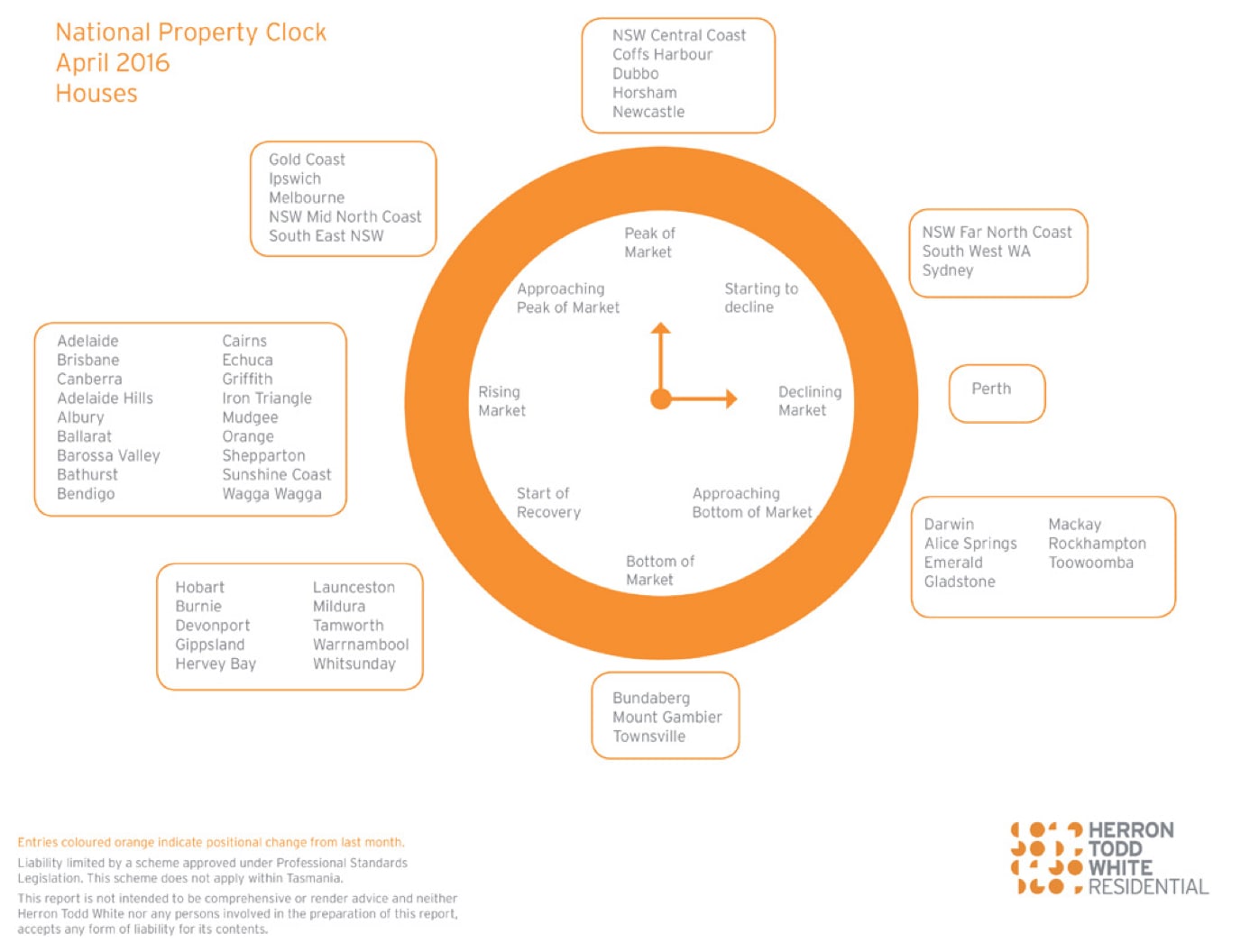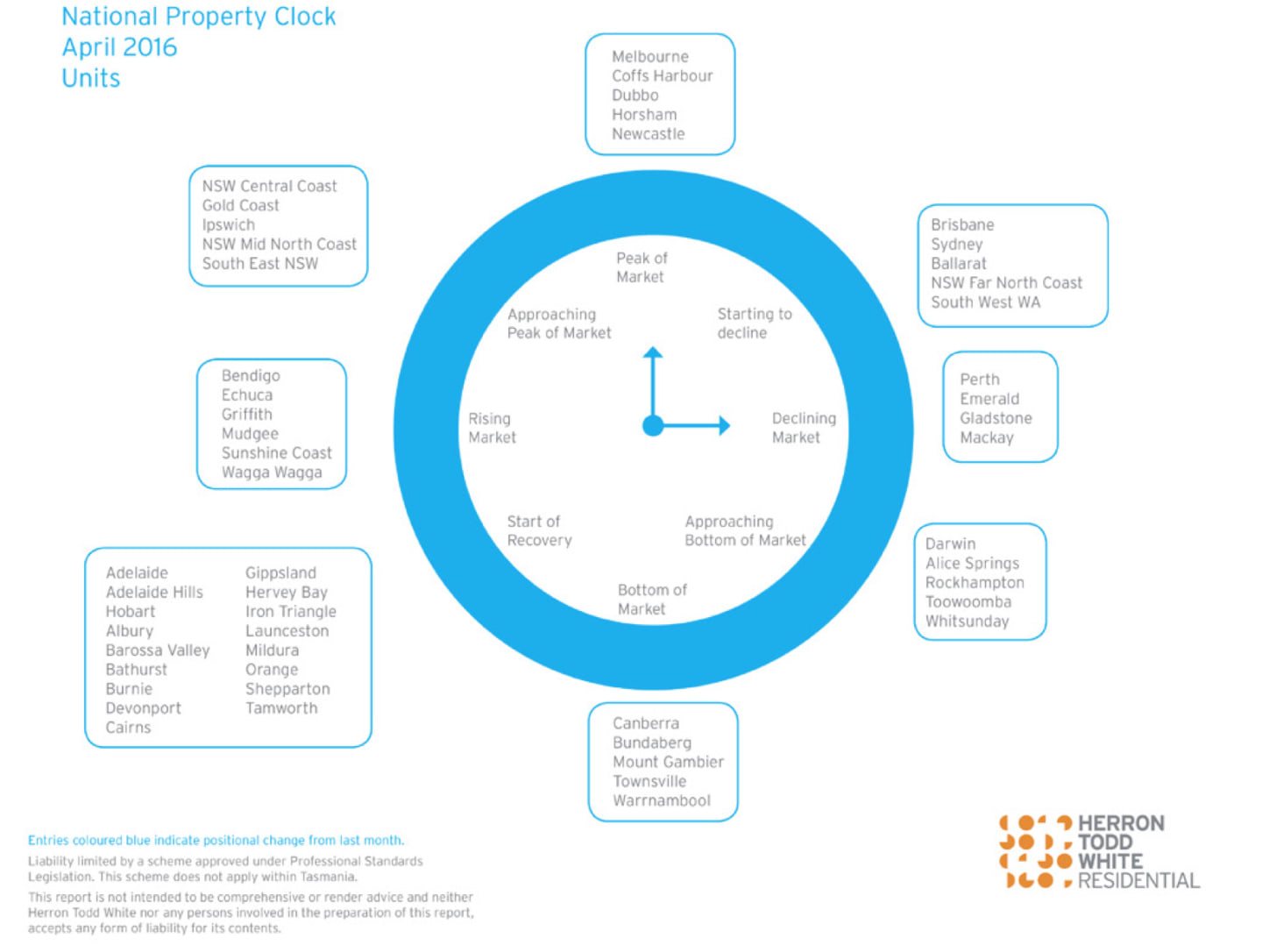Fringes reflect Darwin's struggle, units fare better than houses: HTW
Darwin, the capital city of Northern Territory, was approaching the bottom of market for both houses and units in valuation firm Herron Todd White's latest property clock, April 2016, which also focuses on the markets in the fringe suburbs.
To identify the fringe suburban areas of the Darwin residential market, HTW split it up into three key areas. These are inner city, the northern suburbs and the nearby satellite city of Palmerston. Each of these areas has their own fringe suburbs with a common trait shared by all - they generally have the most affordable prices for their sector.

The inner city fringe suburbs comprise Stuart Park, Ludmilla and The Narrows. Stuart Park occupies a position nearest the Darwin CBD area and has a mix of units and houses whilst Ludmilla and The Narrows are primarily single residential dwellings on large residential allotments. Generally, those who can’t afford the pricier options of the CBD, Larrakeyah, Parap or Fannie Bay look to these suburbs as they are in relatively convenient locations close to the city, with good access to public transport, local schools and other amenities. There has been little to no activity on the sales front for houses in these suburbs, with Stuart Park having only four house sales in the December 2015 quarter. This is reflective of the Darwin market overall which is struggling, with overall vacancy rates up to 8.2 percent (source: REINT).

The volume of unit sales in the inner city fringe suburbs has fared substantially better, however, with sales in Stuart Park increasing by 42% but with a median price drop of 10% (source: REINT). This can be attributed to new developments being released to the market such as the highly awarded Artique complex and savvy investors jumping on a bargain. These figures can be significantly misleading however. Due to the withdrawal of the first home buyer’s grant for existing dwellings, new developments have become extremely attractive while existing units have experienced substantial softening.
A semi-modern two-bedroom unit in Stuart Park recently sold for as low as $385,000. The downturn in the market has opened up the potential for good buying in the area, with the added convenience of being close to the CBD.
A secondary fringe area is the ex-government housing dominated part of the northern suburbs, particularly Malak and Karama. Considered the most inferior part of this area, Malak and Karama are primarily made up of single residential dwellings with a small number of units. These suburbs have performed fairly similarly to other parts of the northern suburbs, with median house prices down approximately 10% on the quarter for both (source: REINT). Good buying can definitely be had, with entry level ground level three-bedroom houses being sold in the mid $400,000 range. In the upper range, elevated properties (considered superior due to the ease of being built under) can be purchased for as low as $520,000.
Vacancy rates are up by 3.4% to 9.2% (source: REINT) year on year, which again is a reflection of the slowing down of the Darwin residential market as a whole. Rents for three-bedroom dwellings in this area have dropped to a median amount of $540 per week which equates to a 16.9% drop per annum. Long term, these suburbs do make for good buying for those who can’t afford the more expensive locations closer to the Nightcliff foreshore and Casuarina Shopping Centre. In the medium term, Malak and Karama are expected to follow the rest of the greater Darwin market, having experienced a large amount of softening since 2014.
Recent sales evidence has shown the market is stabilising however, with vendors setting reasonable price points to meet the new market conditions.
This leaves us with Palmerston, a satellite city approximately 20 kilometres south of the Darwin CBD. The removal of the first home buyer’s grant for existing properties has had a large impact across the board. Fringe suburbs include Moulden, Rosebery, Woodroffe, Driver and Bakewell. Sales volumes for dwellings are significantly down, with last quarter each posting drops of at least 50% on annual figures. Cheap buys in Moulden mean that the mid to high $300,000 range can grab you a neat and tidy three-bedroom property.
Unit stock is also feeling the pinch, with drops in median prices ranging from 2.2% in Rosebery to 18% in Bakewell (source: REINT). These figures reflect a market that has seen a significant downturn, with little evidence of an increase in values any time soon. In Bakewell, a two-bedroom semi-modern unit can be bought for $285,000 and in Rosebery a modern two-bedroom unit can be picked up for $350,000.
The problem is all older stock is competing against brand new dwellings in Durack Heights or Bellamack with first home buyer concessions to boot. There are bargains out there obviously with prices down and vendors needing to sell, however it has become a waiting game for purchasers as with an excess of supply on the market they are spoilt for choice. There has been recent market evidence that 2016 won’t be as bad as 2015, but there is no doubt the polarisation of new versus old stock will remain until the Northern Territory Government addresses changes to the first home buyer’s scheme. A substantial election promise tackling this issue could be on the cards, with real estate professionals across the board agreeing on a necessary change and an upcoming general election scheduled for August 2016.
